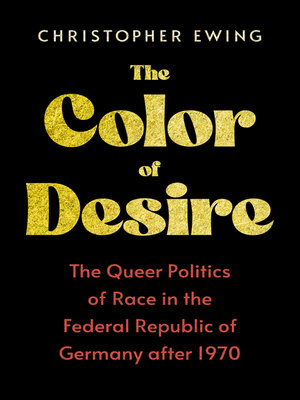The Color of Desire
ebook ∣ The Queer Politics of Race in the Federal Republic of Germany after 1970
By Christopher Ewing

Sign up to save your library
With an OverDrive account, you can save your favorite libraries for at-a-glance information about availability. Find out more about OverDrive accounts.
Find this title in Libby, the library reading app by OverDrive.



Search for a digital library with this title
Title found at these libraries:
| Loading... |
The Color of Desire tells the story of how, in the aftermath of gay liberation, race played a crucial role in shaping the trajectory of queer, German politics. Focusing on the Federal Republic of Germany, Christopher Ewing charts both the entrenchment of racisms within white, queer scenes and the formation of new, antiracist movements that contested overlapping marginalizations.
Far from being discrete political trajectories, racist and antiracist politics were closely connected, as activists worked across groups to develop their visions for queer politics. Ewing describes not only how AIDS workers, gay tourists, white lesbians, queer immigrants, and Black feminists were connected in unexpected ways but also how they developed contradictory concerns that comprised the full landscape of queer politics. Out of these connections, which often exceeded the bounds of the Federal Republic, arose new forms of queer fascism as well as their multiple, antiracist contestations. Both unsettled the appeals to national belonging, or "homonationalism," on which many white queer activists based their claims. Thus, the story of the making of homonationalism is also the story of its unmaking.
The Color of Desire explains how the importance of racism to queer politics cannot—and should not—be understood without also attending to antiracism. Actors worked across different groups, making it difficult to chart separable political trajectories. At the same time, antiracist activists also used the fractures and openings in groups that were heavily invested in the logics of whiteness to formulate new, antiracist organizations and, albeit in constrained ways, shifted queer politics more generally.






